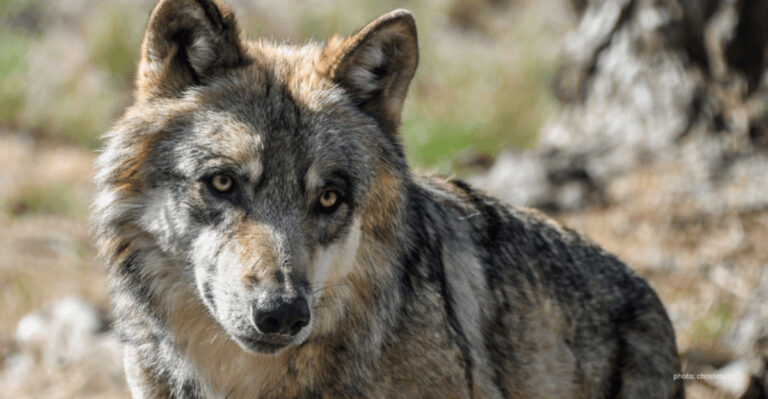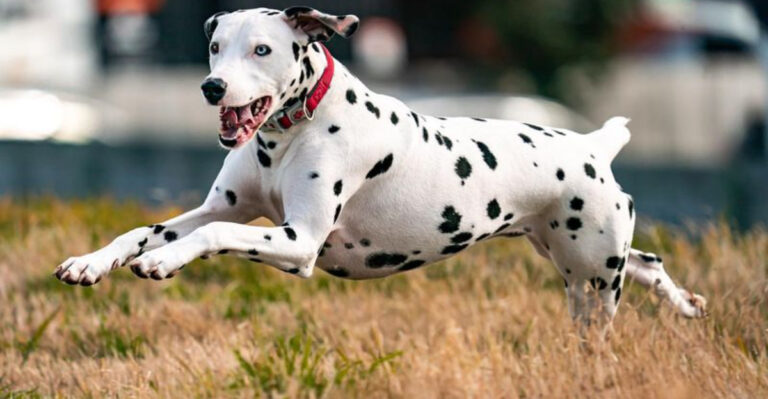14 Dog Behaviors People Get Wrong (And 5 That Make Perfect Sense)
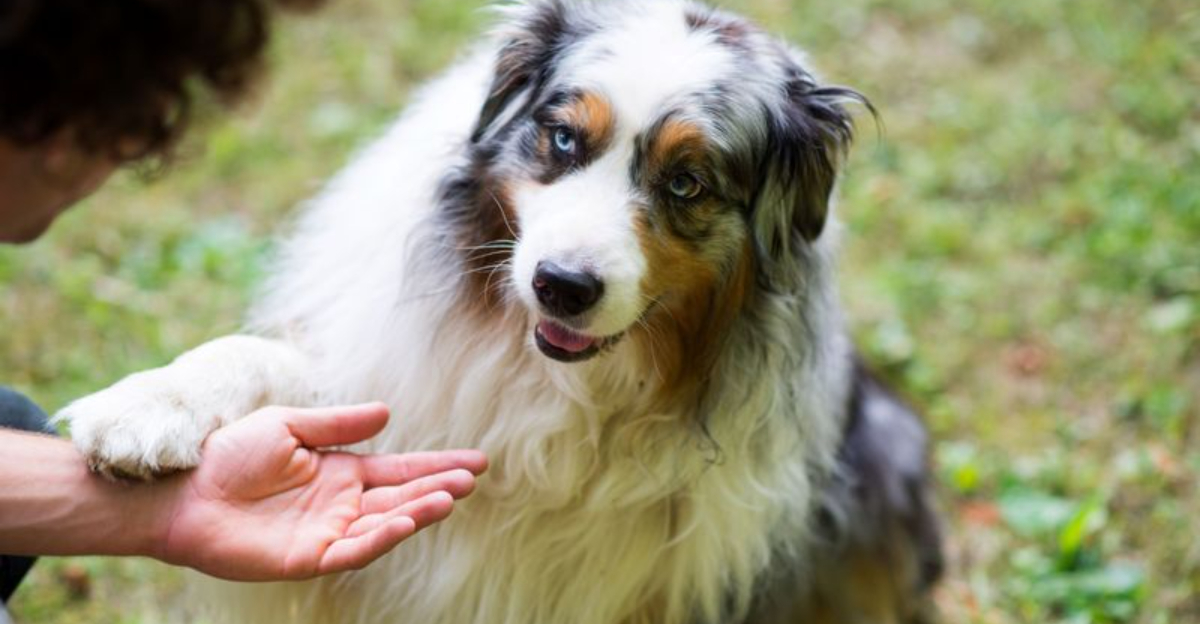
Dogs have a language all their own, and let’s be honest – humans don’t always translate it correctly. That head tilt or tail wag might not mean what you think it does. Some behaviors seem totally bizarre until you realize they actually make perfect sense in dog logic.
Let’s clear up the confusion and give your pup the credit they deserve.
1. Whining For Attention

That high-pitched sound isn’t always about being needy! Dogs whine to communicate a variety of emotions and needs. Sometimes it signals anxiety or discomfort rather than a plea for pets.
Your furry friend might be trying to tell you they’re in pain, feeling stressed, or simply excited about something. Learning to distinguish between different types of whines takes time but helps you respond appropriately to what your dog actually needs.
2. Barking At Nothing
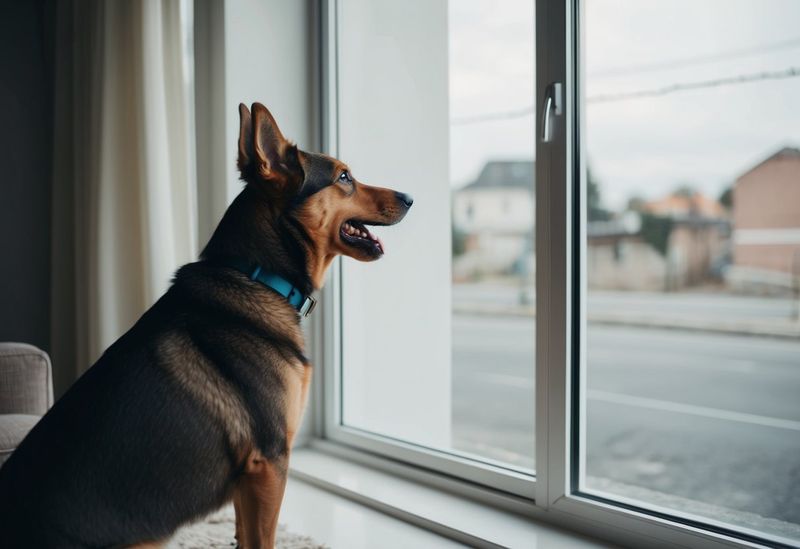
Ghostbusters have nothing on your dog! When your pup seems to bark at empty space, they’re actually detecting sounds, scents, or movements completely imperceptible to human senses.
Dogs can hear frequencies up to four times higher than humans and smell thousands of times better than we can. That “pointless” barking might be your canine responding to distant sirens, neighborhood animals, or even changes in air pressure before storms.
3. Tilting Their Head

That adorable head tilt melts hearts, but it’s not always about cuteness overload. Many people assume it’s a sign of confusion, but it’s actually your dog trying to better understand sounds or see your facial expressions more clearly.
By adjusting their head, they tune into speech patterns or locate the source of a noise more precisely. It’s curiosity and attentiveness rolled into one charming gesture.
4. Chasing Their Tail
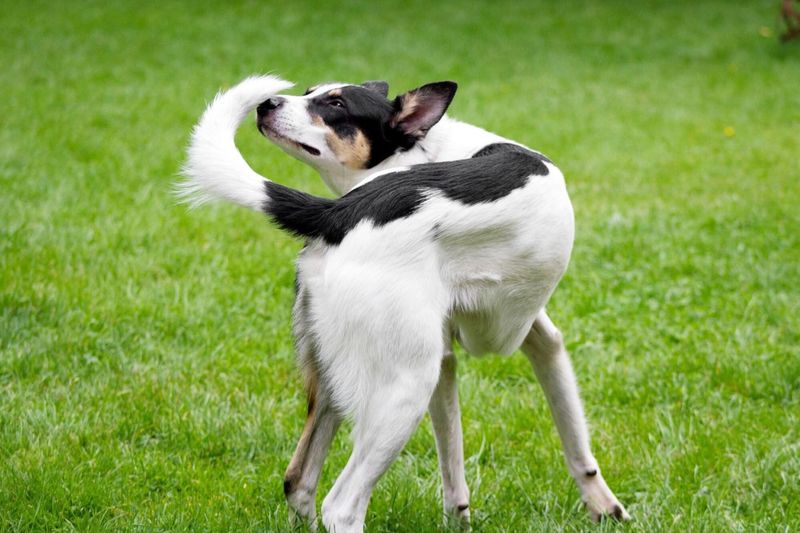
This cartoon-worthy behavior isn’t just silly entertainment. While occasional tail-chasing can be playful, frequent spinning might signal boredom, anxiety, or even medical issues.
Puppies often chase their tails as they explore their bodies, but adult dogs who suddenly develop this habit may need a vet check. Compulsive tail-chasing could indicate parasites, injury, or behavioral problems requiring attention, not just a funny video opportunity.
5. Jumping On People
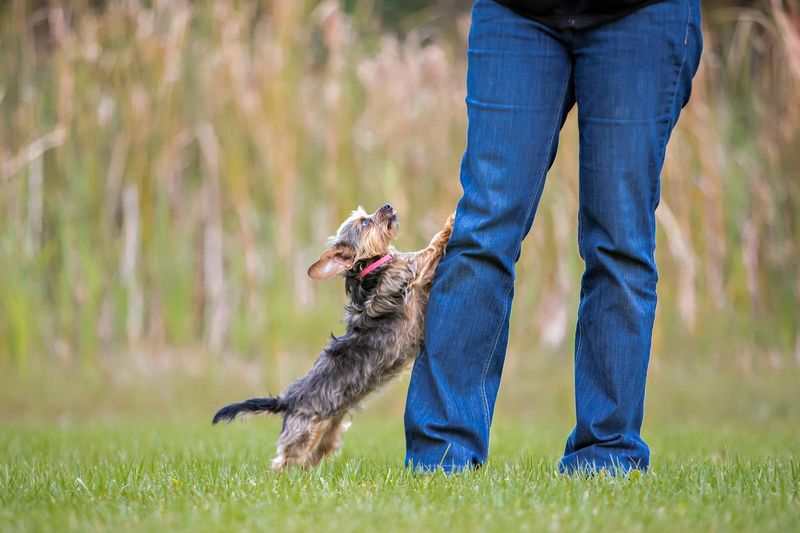
Your dog isn’t being rude when they launch themselves at visitors! In doggy language, jumping up is actually a warm greeting aimed at reaching your face – the most important social zone for canines.
Wild canids and puppies lick the mouths of returning pack members as a greeting ritual. Your grown dog is simply following this ancient programming. With consistent training, this enthusiasm can be redirected into more human-friendly greetings that won’t knock grandma over.
6. Rolling In Smelly Things
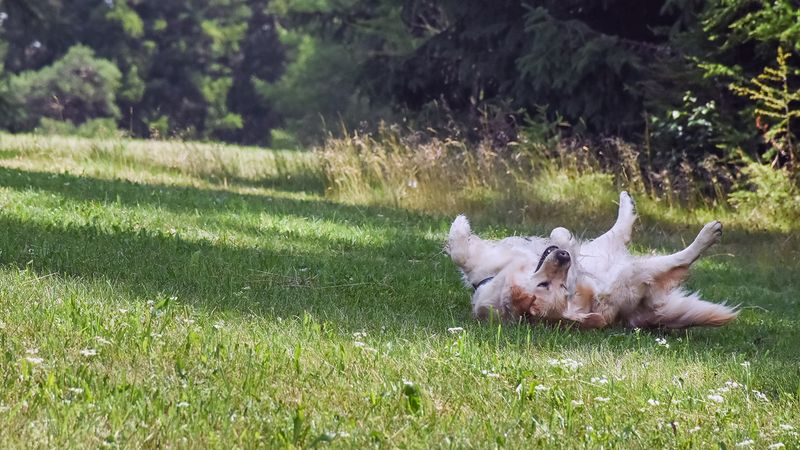
Finding your freshly-bathed buddy rolling in something dead or disgusting isn’t just to ruin your day! This puzzling behavior likely stems from ancestral hunting instincts.
Wild canines roll in strong odors to mask their scent from prey or communicate discoveries to their pack. Your pampered pooch is following ancient programming when they find that perfect patch of stink. They’re not being gross on purpose – they’re actually sharing an exciting discovery with you!
7. Pawing At You
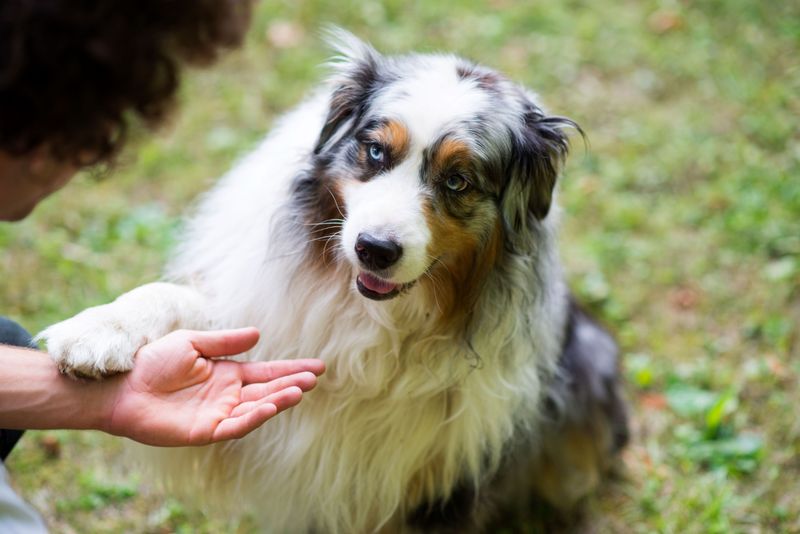
Those gentle taps aren’t random! When your dog places their paw on you, they’re initiating conversation in one of the most direct ways they know how.
Pawing can mean different things depending on context – requesting play, seeking attention, expressing anxiety, or showing affection. Watch for accompanying signals like relaxed ears and body posture for affection, or intense staring for needs. This tactile communication shows how dogs adapt to communicate with humans.
8. Eating Grass
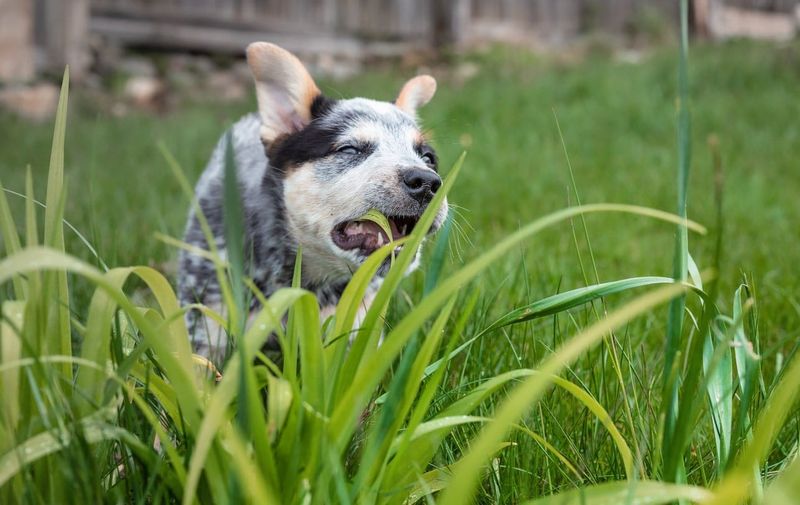
Contrary to popular belief, grass munching isn’t always about an upset tummy! Many perfectly healthy dogs enjoy an occasional lawn salad for reasons unrelated to illness.
Some experts believe grass-eating is an inherited behavior from wild ancestors who consumed plant matter for additional nutrients. Others think dogs simply enjoy the taste or texture. While occasional grazing is normal, sudden excessive grass eating combined with lethargy or vomiting warrants a vet visit.
9. Nipping At Air
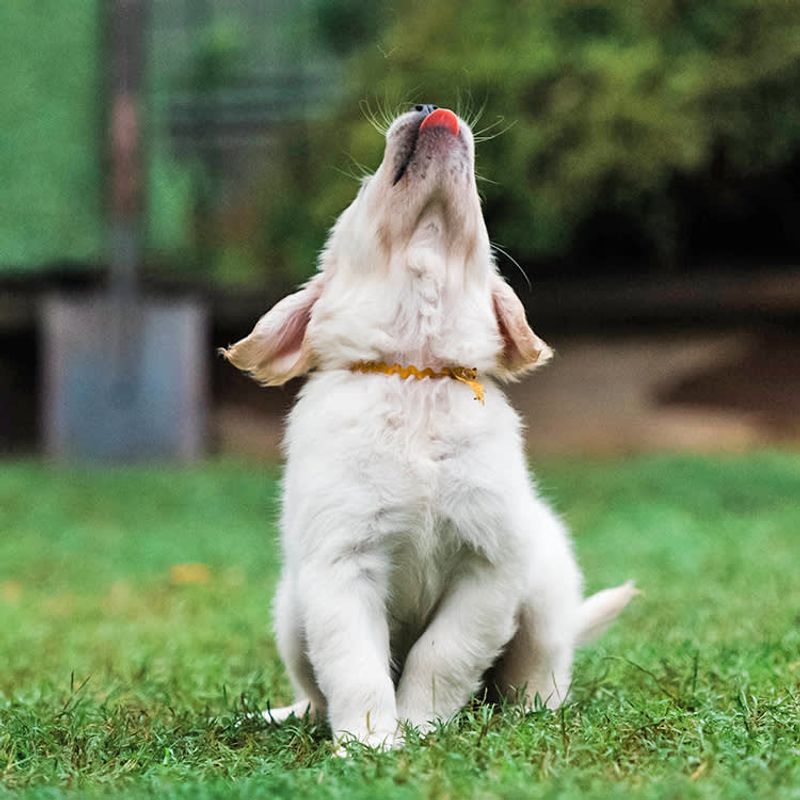
Those phantom bites aren’t signs of aggression or hallucination! Air snapping often indicates excitement, frustration, or playfulness in dogs who struggle to contain their emotions.
Young puppies particularly display this behavior during play when overstimulated. It’s similar to a person who gestures wildly when excited. While generally harmless, consistent air nipping in adult dogs might signal anxiety or compulsive behavior worth discussing with a trainer or behaviorist.
10. Staring Intensely At You
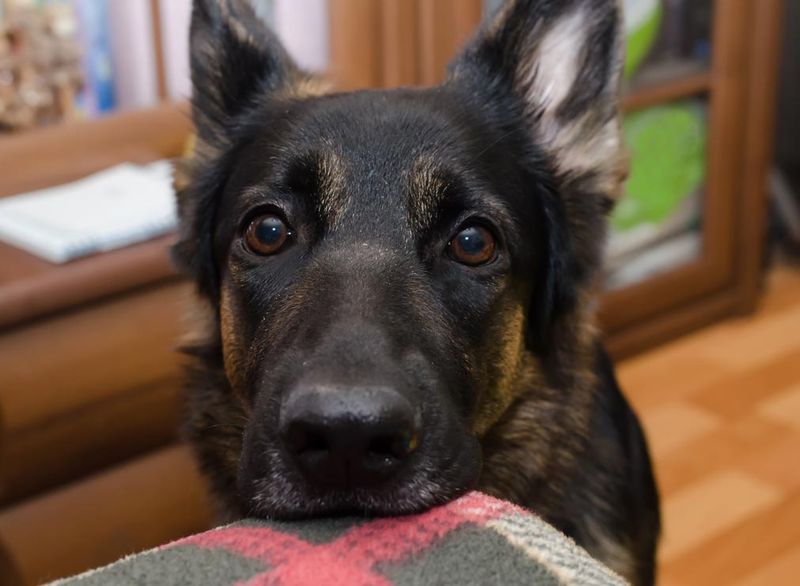
That soul-penetrating gaze isn’t weird or challenging – it’s a profound compliment! When your dog locks eyes with you, they’re often expressing deep connection and trust.
Studies show that mutual gazing between dogs and their humans releases oxytocin – the same bonding hormone mothers produce with their babies. Your dog might also stare when trying to understand your intentions or communicate needs. Either way, that look is one of the purest forms of canine love.
11. Sniffing Another Dog’s Behind
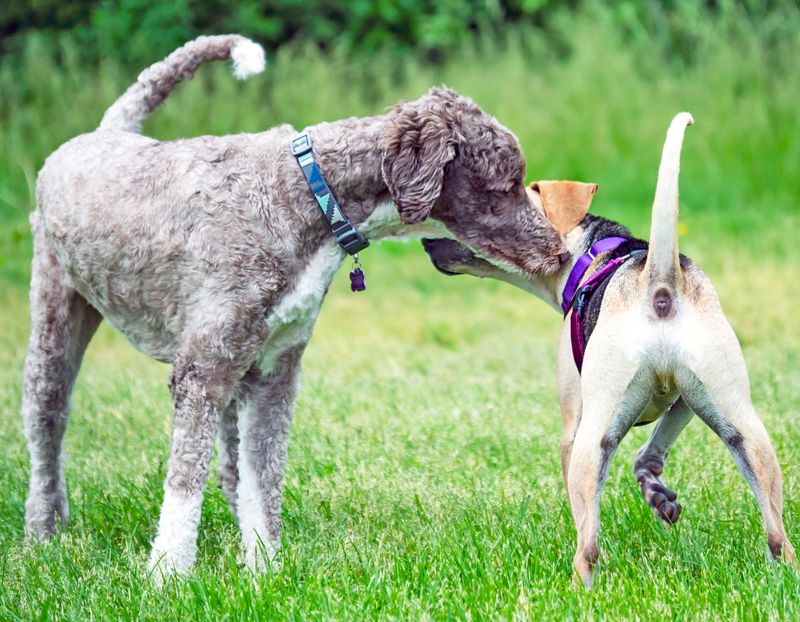
The infamous butt sniff isn’t rude – it’s the canine equivalent of reading someone’s detailed biography! Dogs have specialized scent glands in their rear areas that release pheromones packed with personal information.
This single sniff tells your dog about the other’s gender, diet, emotional state, and reproductive status. It’s essentially their version of a handshake, business card, and social media profile all in one. Interrupting this ritual actually prevents proper dog introductions.
12. Following You Everywhere
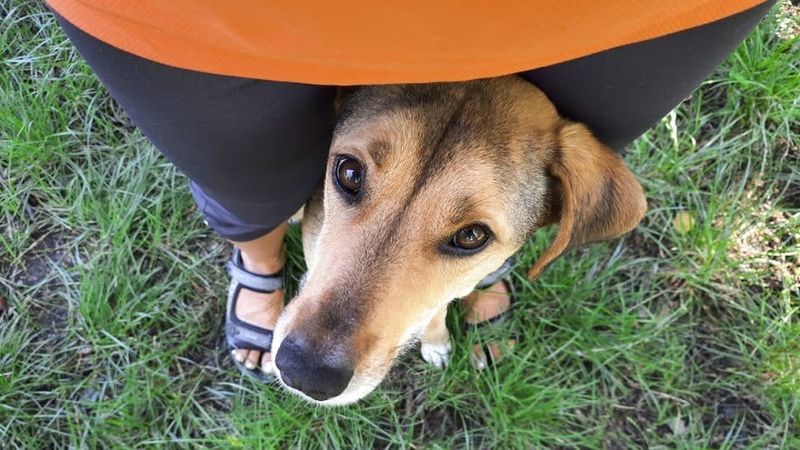
Your furry shadow isn’t necessarily clingy or anxious! Dogs are naturally pack animals who evolved alongside humans specifically because of their desire to be near us.
This velcro behavior often indicates a healthy attachment rather than separation anxiety. Your bathroom buddy simply doesn’t understand the human concept of privacy and sees all activities as potential pack experiences. As long as they can relax when you’re gone, this devotion is actually a compliment!
13. Licking Their Paws

Occasional paw licking is normal grooming, but excessive attention might signal discomfort! Like many dog behaviors, context matters enormously.
Brief cleaning after walks or meals is typical self-maintenance. However, persistent licking focused on one paw could indicate allergies, injuries, or anxiety. Redness, swelling, or a limp alongside the licking means it’s time for a vet visit. Pay attention to when and how often this behavior occurs.
14. Avoiding Eye Contact

When your dog looks away, they’re not being shifty or guilty – they’re actually being polite! Direct staring is considered threatening in dog language, so breaking eye contact is a calming signal.
This subtle communication shows they mean no harm and want to defuse tension. Dogs who’ve been scolded may look away not from guilt but to communicate submission and peace-seeking. Understanding this perspective helps us avoid misinterpreting their respectful behavior as sneakiness.
15. Tail Wagging
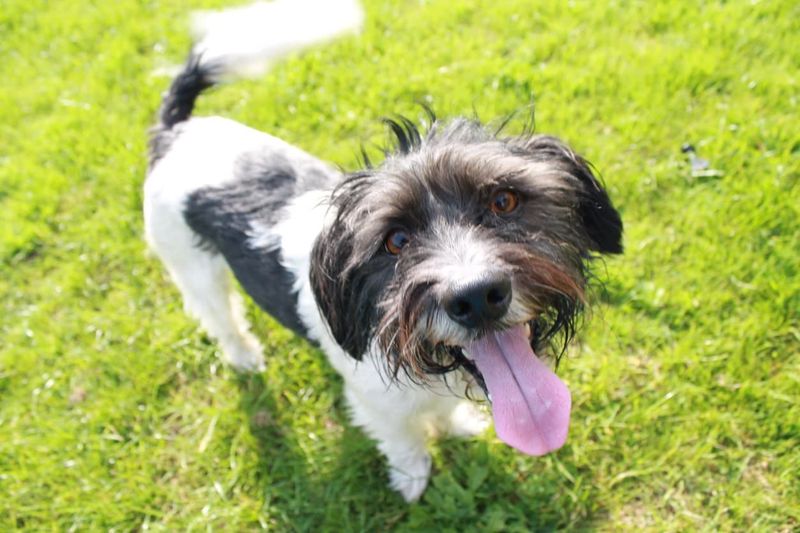
A wagging tail isn’t always happy! This common misunderstanding leads to many surprising nips when humans misread warning signs.
The key is watching how the tail wags. A loose, full-body wiggle usually signals joy, while a high, stiff wag might indicate alertness or even aggression. A low wag could show insecurity. The direction matters too – studies suggest a right-biased wag indicates positive feelings, while left-biased wagging may signal negative emotions.
16. Panting
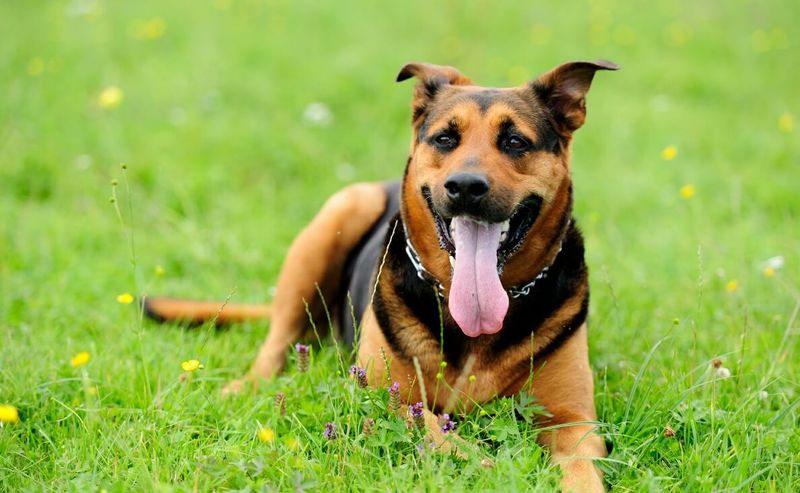
Those heavy breaths aren’t just for hot days! While temperature regulation is the most common reason for panting, your dog’s open-mouthed breathing can communicate much more.
Dogs pant when excited, anxious, in pain, or suffering from certain medical conditions. Normal cooling panting is rhythmic and accompanied by a relaxed expression. Watch for excessive panting in cool environments, irregular breathing patterns, or unusual sounds – these could signal health concerns requiring veterinary attention.
17. Barking To Alert You
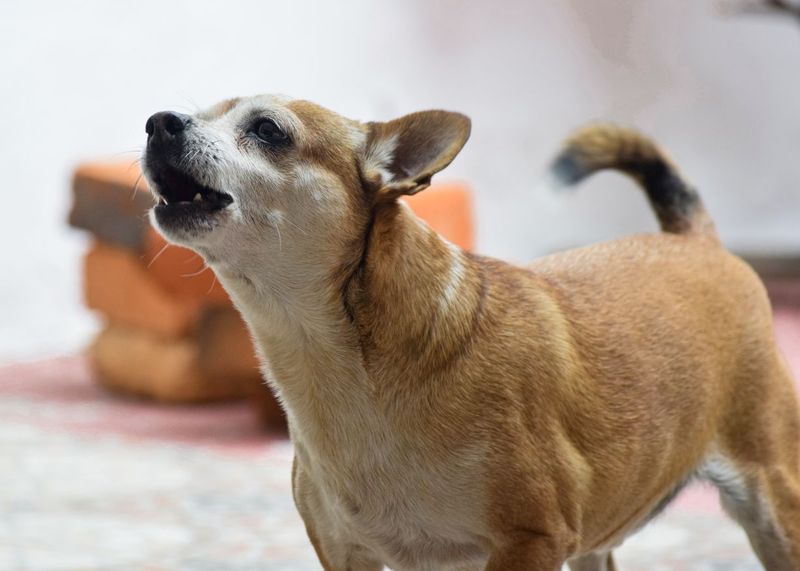
Those warning woofs serve a crucial purpose in your dog’s mind! Alert barking is one of the oldest jobs we’ve given our canine companions throughout history.
Your dog genuinely believes they’re protecting you by announcing visitors, unusual sounds, or neighborhood activities. The intensity and tone of these barks contain information – sharp, staccato barks usually signal potential threats, while excited barks with pauses often announce familiar visitors. Your dog is literally talking to you!
18. Laying At Your Feet

Far from just seeking warmth, your furry footrest is showing profound trust and loyalty! This position allows your dog to track your movements while remaining close to their favorite human.
In wild packs, this vulnerable resting position is reserved for trusted companions. Your dog is simultaneously showing submission and protection by choosing this spot. Some breeds, especially herding dogs, instinctively position themselves at feet to keep their “flock” together – that’s you!
19. Sleeping Near The Door

Parking themselves by the front door isn’t just about catching a draft. That spot lets your dog keep tabs on both exits and your movements, doubling as a protective perch and reunion station.
It’s their way of being your silent guardian – ready to alert, welcome, or just watch over the space. Nothing says loyalty quite like sleeping where they know you’ll come home.



